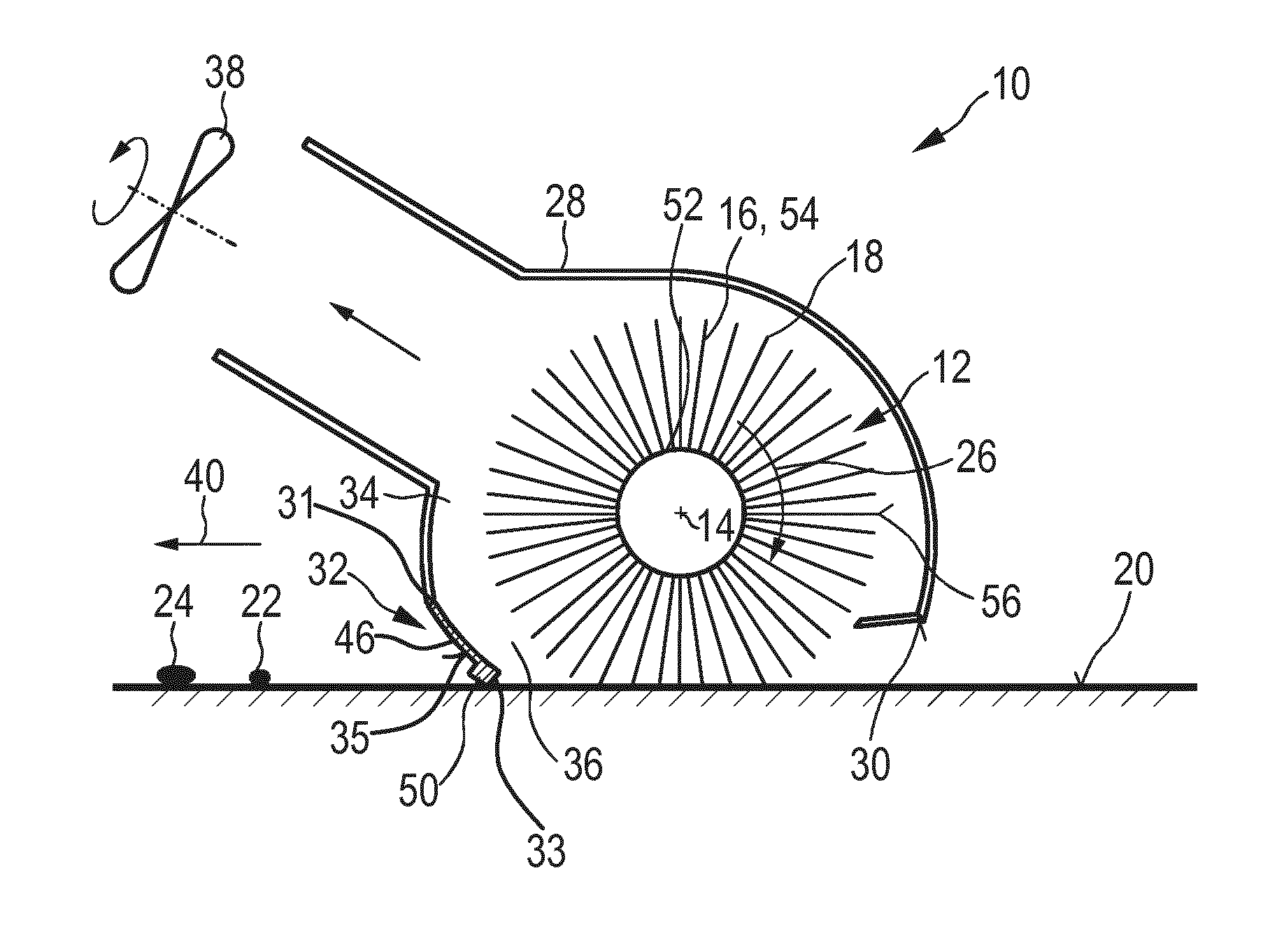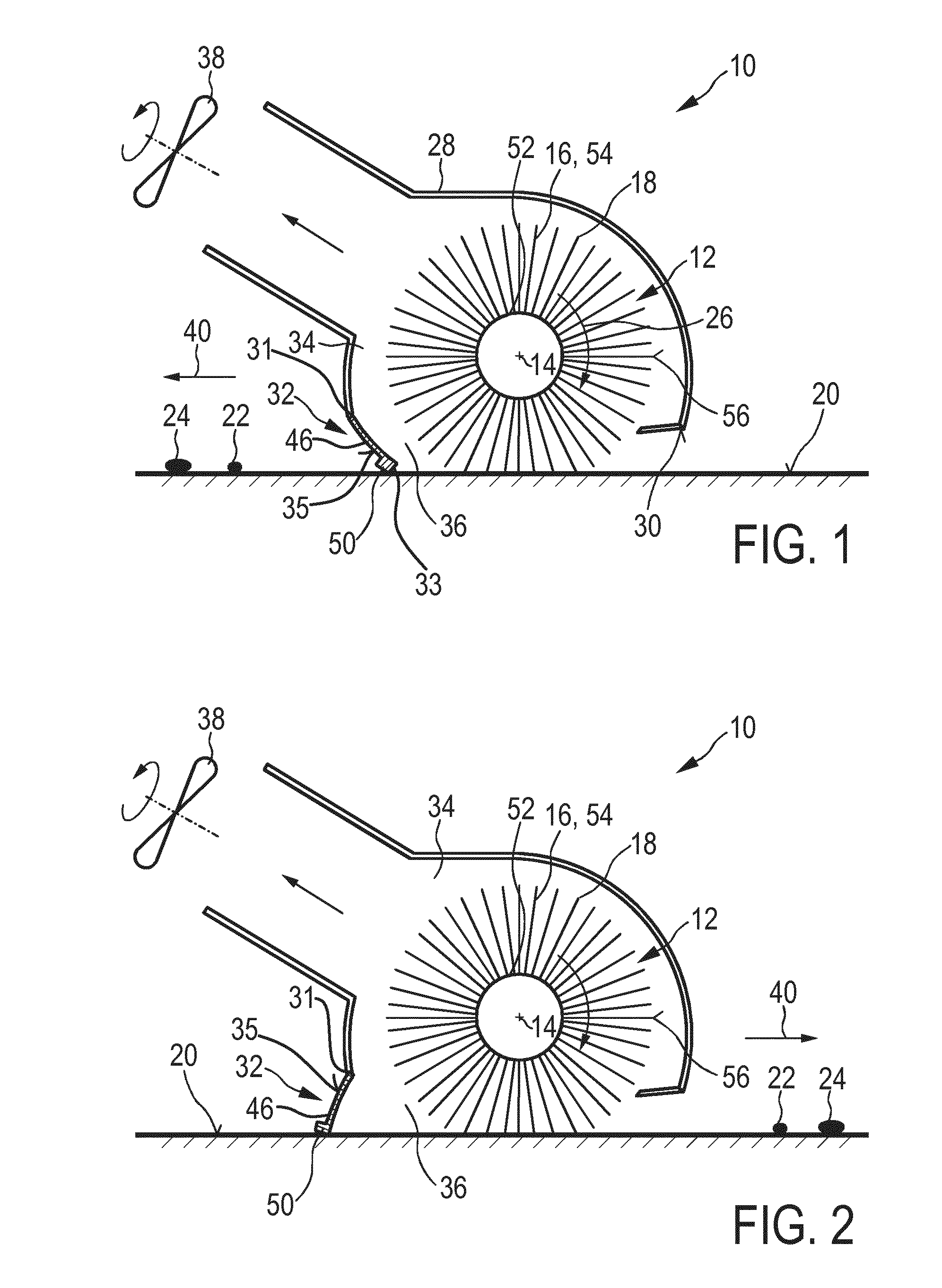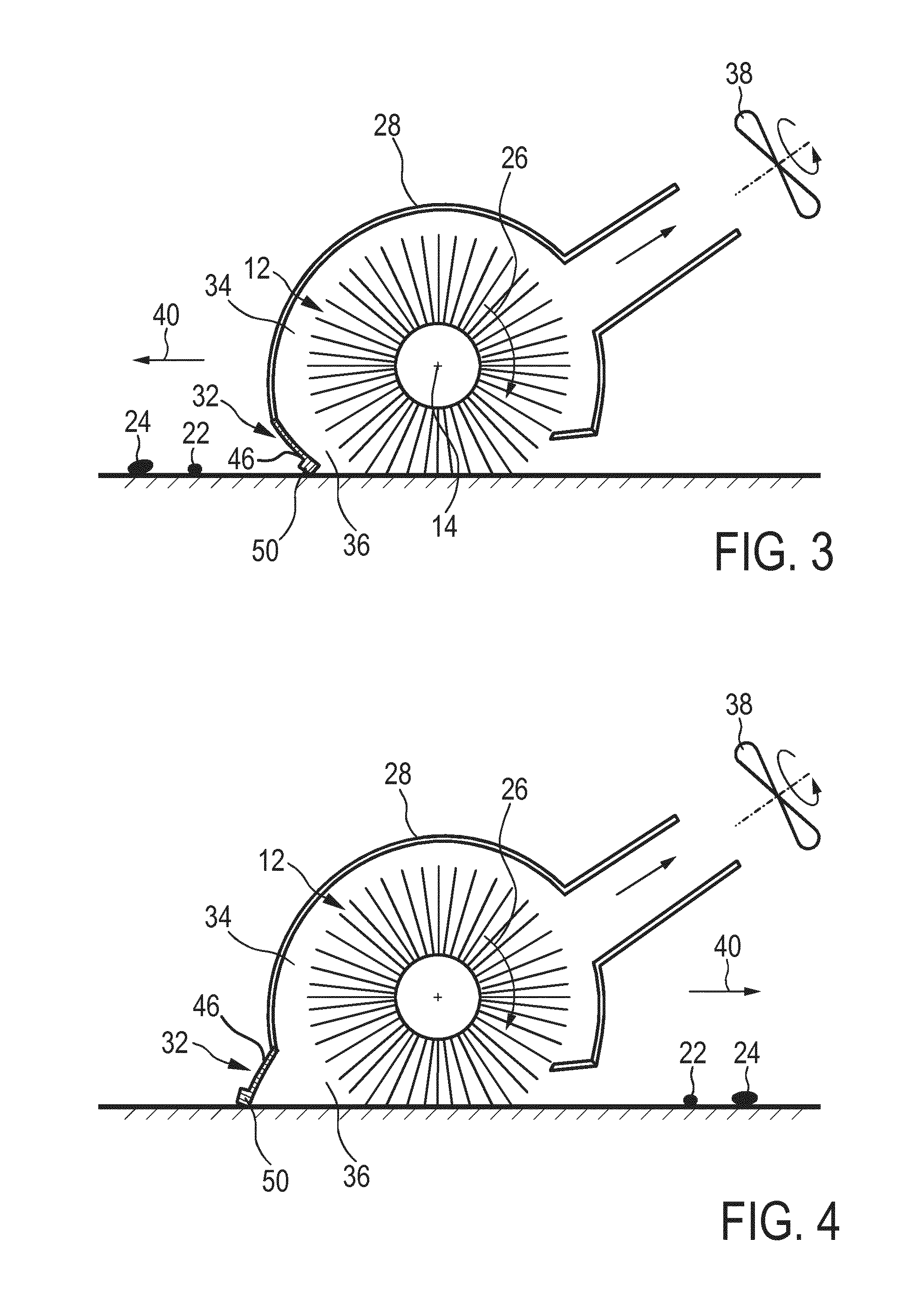Nozzle arrangement with brush and squeegee
a vacuum cleaning and nozzle arrangement technology, which is applied in the direction of vacuum cleaners, carpet cleaners, domestic applications, etc., can solve the problems of moving the device in the opposite direction backward, leaving the floor wet, and low performance on drying the floor, so as to improve the cleaning effect, increase the capillary force of the brush, and improve the effect of cleaning
- Summary
- Abstract
- Description
- Claims
- Application Information
AI Technical Summary
Benefits of technology
Problems solved by technology
Method used
Image
Examples
first embodiment
[0093]FIG. 1 shows a schematic cross-section of a nozzle arrangement 10 of a cleaning device 100 according to the present invention. The nozzle arrangement 10 comprises a brush 12 that is rotatable about a brush axis 14. Said brush 12 is provided with flexible brush elements 16 which are preferably realized by thin microfiber hairs. The flexible brush elements 16 comprise tip portions 18 which are adapted to contact a surface to be cleaned 20 during the rotation of the brush 12 and to pick-up dirt particles 22 and / or liquid particles 24 from said surface 20 (floor 20) during a pick-up period when the brush elements 16 contact the surface 20.
[0094]Further, the nozzle arrangement 10 comprises a drive means, e.g. a motor (not shown), for driving the brush 12 in a predetermined direction of rotation 26. Said drive means are preferably adapted to realize a centrifugal acceleration at the tip portions 18 of the brush elements 16 which is, in particular during a dirt release period when th...
second embodiment
[0104]FIGS. 3 and 4 show the nozzle arrangement 10. These figures illustrate that the nozzle housing 28 may also have another form. The squeegee 32 can also be arranged at the front end of the nozzle housing 28, instead of being arranged at its back end as shown in FIGS. 1 and 2. However, by comparing FIGS. 3 and 4 with FIGS. 1 and 2 it can be seen that the squeegee 32 is still arranged on the side of the brush 12, where the brush elements 16 enter the nozzle housing 28 during the brush's rotation (see rotation direction 26).
[0105]As it can be seen from FIG. 3, the squeegee 32 has to be in this case again in the open position when the nozzle 10 is moved in the forward direction, in which the squeegee 32 is, seen in the direction of movement 40, located in front of the brush 12.
[0106]On the other hand, the squeegee 32 needs to be in its closed position when the nozzle is according to this embodiment moved in the backward direction as shown in FIG. 4, where the brush 12 is, seen in th...
PUM
 Login to View More
Login to View More Abstract
Description
Claims
Application Information
 Login to View More
Login to View More - R&D
- Intellectual Property
- Life Sciences
- Materials
- Tech Scout
- Unparalleled Data Quality
- Higher Quality Content
- 60% Fewer Hallucinations
Browse by: Latest US Patents, China's latest patents, Technical Efficacy Thesaurus, Application Domain, Technology Topic, Popular Technical Reports.
© 2025 PatSnap. All rights reserved.Legal|Privacy policy|Modern Slavery Act Transparency Statement|Sitemap|About US| Contact US: help@patsnap.com



